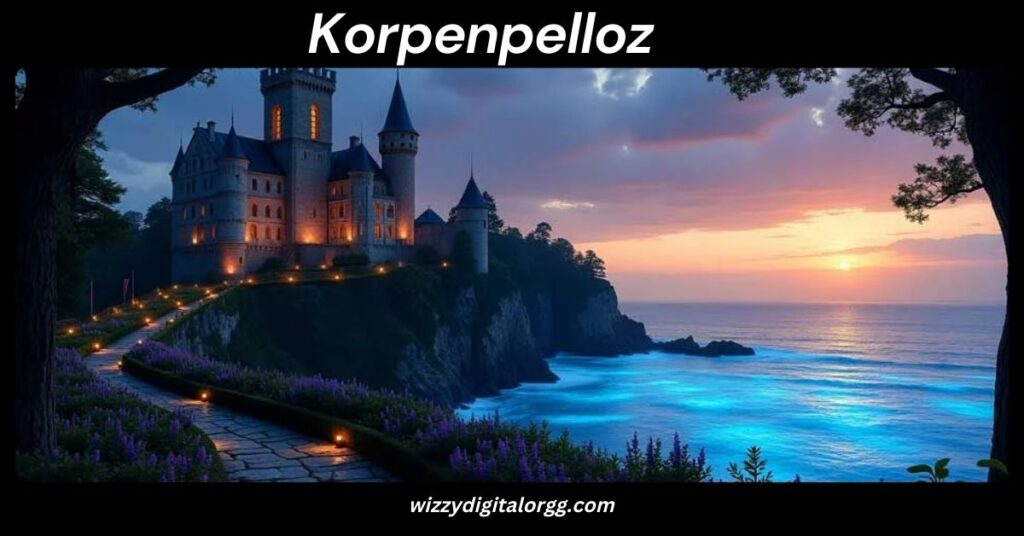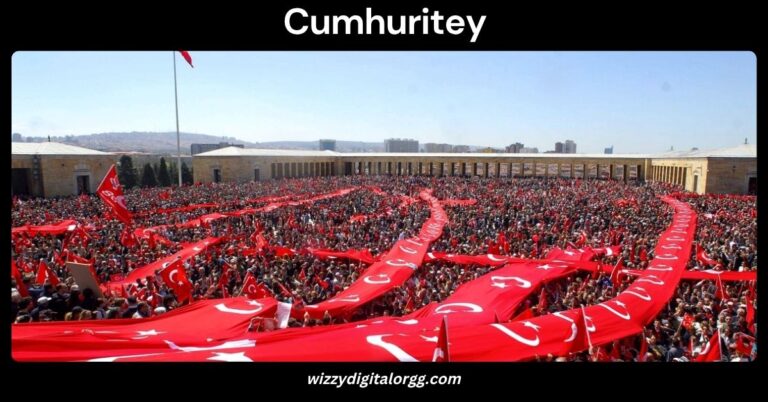
Korpenpelloz is a unique concept that combines rich cultural symbolism and folklore with the influence of modern art, fashion, and festivals. This mysterious term, often associated with the raven, transcends traditional boundaries of cultural understanding and has inspired a global following. As the interest in Korpenpelloz continues to grow, it’s essential to understand its origins, its ties to raven mythology, and its role in contemporary creative movements.
In this article, we’ll dive deep into the fascinating world of Korpenpelloz, exploring its cultural significance, its ties to folklore, and how it influences the realms of art, fashion, and festivals today. We’ll also touch on related themes and provide insights into the evolution of this intriguing concept. Whether you’re a fan of folklore or simply curious about new cultural trends, this guide offers a comprehensive look at Korpenpelloz.
What is Korpenpelloz? The Origins and Meaning
Korpenpelloz is a term that draws its roots from the word “korpen,” which is derived from the Old Norse and Swedish word for raven. The term “pelloz” isn’t widely used in conventional language but adds a layer of mystique and uniqueness to the concept. Together, these two elements form a symbolic and cultural representation of the raven’s role in ancient mythologies and its connection to mystery, wisdom, and the unknown.
The raven has been a symbol in numerous cultures, often representing the threshold between life and death, knowledge, and hidden truths. In Norse mythology, for instance, the raven is a companion of Odin, the all-knowing god, who sends out ravens to gather information. Over time, the concept of Korpenpelloz has come to embody more than just the bird itself but the deeper cultural significance associated with it.

Raven Symbolism in Folklore and Culture
The Raven in Ancient Mythologies
The raven has held symbolic value across various cultures for centuries. In many ancient mythologies, ravens were seen as messengers or creatures that connected the human realm with the divine. In Norse mythology, Odin, the god of wisdom, often associated with the ravens Hugin and Munin, sent them out to gather knowledge from the world. This connection to knowledge and mystery is a key component of the Korpenpelloz concept.
In Celtic folklore, ravens were believed to have prophetic abilities, often appearing as omens of change or transformation. Similarly, in Native American traditions, ravens are often considered to be tricksters or creators, playing a vital role in the creation myths of various tribes.
Also Read: CHAS6D: A Comprehensive Guide
The Raven as a Symbol of Wisdom and Knowledge
Throughout history, ravens have been linked to wisdom and intelligence. They are highly adaptable birds, capable of solving complex problems and using tools, making them an embodiment of intellect. The raven’s ability to thrive in various environments and its mysterious behavior have led to its association with the unknown and the unseen.
The term Korpenpelloz embodies this duality – the raven as both a symbol of wisdom and a messenger of deeper, often hidden truths. This symbolism influences how we view the modern reinterpretation of Korpenpelloz in art, fashion, and festivals.
Korpenpelloz in Modern Art: An Expression of Mystery and Depth
The influence of Korpenpelloz on modern art is a testament to its timeless cultural relevance. Artists who are inspired by raven symbolism often use the bird as a metaphor for exploration, the search for knowledge, or the confrontation with the unknown. The raven, as a creature of the dark, offers a rich palette for artists to explore themes of mystery, transformation, and enlightenment.
Visual Art and Sculpture
In visual arts, Korpenpelloz is often expressed through dark, intricate designs that evoke a sense of mystery. Sculptures and paintings that feature ravens as central motifs often convey a deep connection to the natural world, a reflection on life and death, or a journey into the subconscious. Some artists even incorporate elements of Norse or Celtic mythology into their work, paying homage to the historical symbolism of ravens.
Raven imagery in contemporary art is not only about the bird itself but also about what the raven represents. For many artists, Korpenpelloz symbolizes a journey into the unknown or a confrontation with existential questions.
Digital and Contemporary Art Movements
In the realm of digital art, Korpenpelloz continues to evolve. Artists use the raven as a symbol to explore themes of darkness, mystery, and even hope. Digital illustrations, animations, and video games often use ravens as characters or motifs, each reflecting different interpretations of the raven’s symbolic significance.
Korpenpelloz and Its Influence on Fashion
Korpenpelloz has made its mark on modern fashion by blending elements of gothic, mystical, and natural aesthetics. Designers often use raven-inspired patterns, colors, and textures to create garments that reflect the bird’s symbolic meanings.
Also Read: Artofzio: Revolutionizing Digital Art Creation and Sales
Raven-Inspired Fashion Trends
Fashion designers have long been drawn to the raven’s dark elegance. Clothing collections that feature raven motifs or are inspired by raven symbolism often explore themes of sophistication, mystery, and transformation. Dark colors like black and deep purples are frequently used, alongside intricate patterns or feathers that evoke the bird’s presence.
Streetwear, high fashion, and alternative styles have embraced Korpenpelloz, using it as a foundation for creating edgy and unique looks. Raven imagery can be found on everything from casual hoodies and t-shirts to more elaborate couture dresses, demonstrating the flexibility of this symbolism in different fashion contexts.
The Connection Between Korpenpelloz and Subcultures
The influence of Korpenpelloz is particularly strong within subcultures that embrace the gothic, punk, and alternative lifestyles. These communities often use the raven as a symbol of rebellion, individuality, and a rejection of conventional norms. The dark elegance associated with ravens fits perfectly with the values of these subcultures, which prioritize authenticity and self-expression.
Festivals and Rituals: The Raven’s Role in Celebrations
Festivals and rituals around the world have long celebrated the symbolism of the raven, and Korpenpelloz plays a significant role in modern festivals, particularly those with an emphasis on nature, mysticism, and transformation.
The Raven in Pagan Festivals
In pagan and neo-pagan traditions, ravens are often associated with the cycles of nature, the changing of seasons, and the mysteries of life and death. Celebrations such as Beltane, Samhain, and Winter Solstice may feature raven imagery as part of rituals that honor the transition between the physical and spiritual worlds.
Korpenpelloz, as a modern interpretation of these ancient traditions, finds expression in festivals that blend elements of mythology, nature, and art. Festivals centered on themes of transformation, magic, and the occult often incorporate the raven as a central symbol, linking the past with the present in a celebration of mystery and magic.
Global Celebrations of the Raven
Across the world, the raven appears in a variety of cultural festivals. From the harvest festivals of the Celtic nations to the Halloween traditions in the United States, the raven is a constant companion to celebrations that involve death, transformation, and the supernatural. Modern interpretations of Korpenpelloz bring these festivals to life with a blend of traditional rituals and contemporary creativity.
Also Read: Pedro Vaz Paulo: A Comprehensive Exploration
Korpenpelloz and Its Impact on Popular Culture
The influence of Korpenpelloz extends beyond the realms of art, fashion, and festivals, with its themes woven into popular culture. Films, literature, and music frequently draw on raven symbolism to explore complex themes of life, death, and mystery.
Literature and the Raven’s Legacy
One of the most iconic pieces of literature involving a raven is Edgar Allan Poe’s poem “The Raven.” This literary work captures the dark, melancholic atmosphere associated with the bird and has contributed significantly to the cultural mythology of ravens. Korpenpelloz, in a modern sense, is a continuation of this literary tradition, adding a new layer of depth to the raven’s symbolic role in storytelling.
Music and the Raven’s Mystique
The influence of Korpenpelloz can also be seen in music. Many rock, metal, and goth bands incorporate raven imagery into their lyrics and album artwork. The raven, with its dark symbolism, is often used to convey themes of mystery, introspection, and the unknown, resonating deeply with fans of these music genres.
Frequently Asked Questions (FAQs)
What does the term Korpenpelloz mean?
Korpenpelloz is a blend of “korpen,” the Old Norse and Swedish word for raven, and “pelloz,” a term that adds mystery and uniqueness. It represents the symbolic and cultural significance of the raven across various mythologies and its modern reinterpretations.
Why is the raven so important in folklore?
The raven is significant in folklore due to its associations with wisdom, knowledge, and the mysterious unknown. It has been depicted as a messenger between life and death and is often seen as a creature of transformation.
How has Korpenpelloz influenced modern art and fashion?
Korpenpelloz influences modern art by inspiring artists to explore themes of mystery, transformation, and wisdom. In fashion, the raven’s symbolism manifests in dark, mystical clothing styles that blend gothic, punk, and alternative aesthetics.
Are there any festivals related to Korpenpelloz?
Yes, festivals celebrating nature, transformation, and mysticism often incorporate raven symbolism. Pagan festivals such as Beltane and Samhain, as well as modern celebrations like Halloween, are examples where the raven’s symbolism plays a central role.
How can I incorporate Korpenpelloz symbolism into my life?
You can incorporate Korpenpelloz symbolism by exploring raven-inspired art, fashion, and literature. Attending festivals that celebrate nature and transformation, or creating your own rituals, are ways to embrace the mystique of the raven.
Conclusion
Korpenpelloz is a concept that seamlessly blends ancient folklore, symbolism, and modern creativity. Through its connection to the raven, it touches on themes of wisdom, mystery, and transformation. From influencing contemporary art and fashion to inspiring festivals and rituals, Korpenpelloz continues to captivate and intrigue audiences around the world. By embracing its rich cultural heritage and its relevance in modern creative movements, Korpenpelloz proves to be a dynamic and evolving force in both the spiritual and artistic realms. Whether you’re drawn to the mysticism of the raven or simply fascinated by the fusion of ancient symbolism with modern trends, Korpenpelloz offers a window into a world of depth and mystery.



